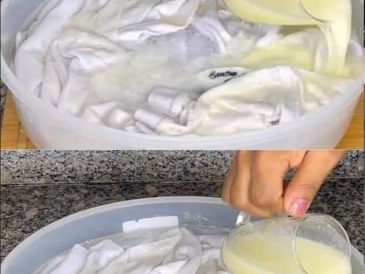Defrosting meat properly is crucial for food safety and to maintain its quality. While leaving frozen meat on the table or countertop might seem convenient, it can cause the meat to thaw unevenly and enter the “danger zone” (40°F–140°F), where bacteria can multiply rapidly. Here’s the best way to safely and effectively defrost meat:
Three Safe Methods for Defrosting Meat:
1. In the Refrigerator (Best Method)
- How it works: This is the safest and most effective way to defrost meat. The refrigerator keeps the meat at a consistent, safe temperature while it thaws slowly.
- Steps:
- Plan ahead: Depending on the size of the meat, this method can take several hours or overnight.
- Place the meat on a tray or in a shallow pan: To catch any juices that may escape and prevent cross-contamination with other foods.
- Allow enough time: Smaller cuts (like chicken breasts or ground meat) may take 4–6 hours, while larger cuts (like whole chickens or roasts) may take 24 hours or more.
- Why it’s best: Defrosting in the fridge ensures the meat stays at a safe temperature (below 40°F), preventing harmful bacteria from growing.
2. In Cold Water (Faster Option)
- How it works: This method is faster than defrosting in the fridge, but requires more attention. The key is to keep the meat in a sealed bag and submerge it in cold water.
- Steps:
- Place the meat in a leak-proof plastic bag: This prevents the meat from absorbing water and keeps it sanitary.
- Submerge in cold water: Fill a large bowl or sink with cold tap water and completely submerge the bagged meat.
- Change the water every 30 minutes: This helps maintain a safe, consistent temperature.
- Cook immediately: Once the meat has thawed, cook it right away.
- Why it works: The cold water helps thaw the meat more quickly than the fridge, but it’s still important to monitor the water temperature and ensure the meat doesn’t sit at unsafe temperatures for too long.
3. In the Microwave (Quickest Method)
- How it works: The microwave uses heat to defrost meat quickly, but this can lead to uneven thawing, and parts of the meat may start cooking.
- Steps:
- Use the microwave’s defrost setting: Most microwaves have a “defrost” function, which is designed to thaw food by using low power.
- Check and flip the meat periodically: Since the microwave can heat unevenly, check the meat every few minutes and rotate or flip it to ensure even thawing.
- Cook immediately: After microwaving, the meat may begin to cook around the edges, so it’s important to cook it right away.
- Why it works: While this method is the fastest, it’s not recommended for large cuts or thick pieces of meat, as they can thaw unevenly or partially cook.
Methods to Avoid for Defrosting Meat:
- Leaving meat on the countertop: Allowing meat to thaw at room temperature can cause the outside to warm up too much while the inside remains frozen, creating the perfect environment for bacteria to multiply.
- Hot water thawing: Never use hot water to thaw meat, as it can raise the surface temperature of the meat to dangerous levels, again promoting bacterial growth.
Additional Tips:
- Don’t refreeze meat once it’s been thawed: If meat has thawed using any method except the microwave, it should be cooked before refreezing. If you’ve defrosted it in the microwave or using hot water, you shouldn’t refreeze it unless it’s been cooked first.
- Consider cooking from frozen: Some meats, like chicken breasts or ground meat, can be cooked directly from frozen. It will take about 1.5 times longer than cooking thawed meat, but it’s safe and convenient in a pinch.
- Plan ahead: To avoid the rush, plan meals ahead of time so you can take meat out of the freezer in advance and let it thaw safely in the fridge.
By using one of these safe defrosting methods, you ensure that your meat thaws properly without compromising food safety or quality. It’s always better to plan a little ahead and let the meat thaw slowly in the fridge or use cold water for faster defrosting rather than relying on risky countertop thawing




